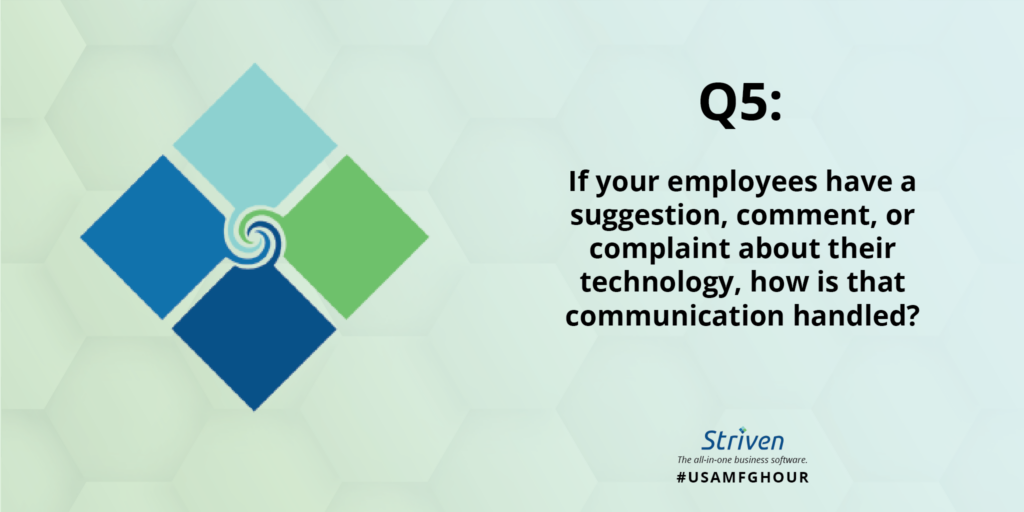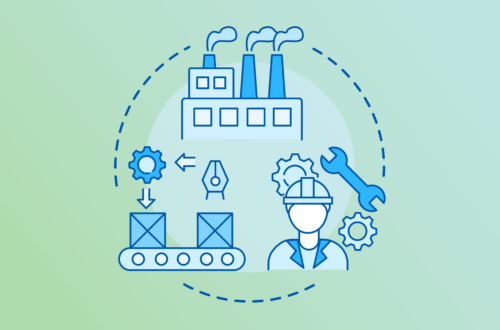As they do every week on Twitter from 2-3pm EST, the great people behind #USAManufacturingHour (@DCSCInc, @CvtPlastics, and @SocialSMktg) lead powerful and informative discussions about the latest topics in manufacturing. This blog is sourced from discussions from the inaugural #MfgHour Virtual Networking Mixer.
Innovation comes in all shapes and sizes—this is especially true in the manufacturing industry. While the manufacturing industry contributes a whopping 11% to the overall United States GDP, 75.3% of American manufacturers have fewer than 20 employees.
In short, the small business manufacturers of America continue to carry the weight of the economy on their backs.
This is no small feat, especially considering some of the staffing challenges that have plagued manufacturers of late. Despite 8.6% of the United States workforce being employed in the manufacturing industry, 89% of manufacturers report they are having trouble finding qualified workers.
There are many factors that have contributed to the recent growth of this issue. This is a dilemma that demands industry-wide attention—and in some cases—a fundamental rethinking of business operations.
The future of manufacturing will demand a lot from businesses both big and small. While every manufacturer is unique in terms of their product and service offerings, one theme holds true—innovation is necessary.
Small Change, Big Result
One of the most curious elements of innovation is that change often starts small.
Let’s take a step back from manufacturing for a second—this is a theme that holds true across society at large. For example, the average person does not contribute an alarming amount of greenhouse gas emissions. The effect, however, is cumulative—while a single person’s actions don’t dictate the fate of our environment, the aggregate sum of every individual’s actions do in fact help dictate it.
Sure, this is a relatively moribund example, but it does effectively illustrate the point that small actions often have big consequences.

In manufacturing, finding innovative and creative ways to increase the frugality of your production while upholding the standard of excellence that your customers and clients have come to expect is certainly no easy task.
Cathy Beck of Grey Sky Films has seen this play out firsthand. Videography had been disrupted by the pandemic—without the ability to have frequent site visits, it was time to think outside the box.
Cathy and her team worked hard to create custom content databases for her clients to access virtually. This not only satisfied her existing client base, but this methodology functioned so smoothly that it led to additional clients coming on board.
In the Beck household, finding innovative solutions is a family affair. Years ago, her husband helped a snack food manufacturer save a significant amount of money and resources with one, small change in product packaging:
“They realized that by minimizing waste by 1/10th of an inch would save them a ridiculous amount of money by the end of the year. Think about that, how tiny that was but how effective it was.”
Not every innovation has to be a novel invention or a reality-shattering epiphany. Sometimes, all it takes is taking a more detailed and organized approach to the things your business already does well. And as the oft-quoted cliché goes, good things come in small packages.
Lean Manufacturing Processes
Most of us have found ourselves in a position like this before: we are so hyper-focused—some may say “obsessed”—on the end result of a professional goal that we lose sight of what’s directly in front of us.
In other words, sometimes we put the cart before the horse.
Task management is vital in nearly every industry. In manufacturing, it takes on an elevated level of importance.
People have a tendency to keep their blinders on, especially when it comes to over-focusing on the final outcome of the product. That’s not a bad thing on its own—it’s obviously important to have a clear picture of your end-stage product.
Having only the end result in mind may cause someone to overlook various, crucial aspects of the production process—utilizing more fuel efficient machinery, finding more durable materials, and even assessing how your equipment is arranged on the production floor.
Lermit Diaz, CEO of SCTools, knows a thing or two about how important it is to focus on every detail of the lean manufacturing process. His approach: the size of the change is not as important as the consistency and dedication to every detail that serves the overarching goal:
“The small steps will encourage you to get that objective and you move to the next one and the next one.”
Gina Tabasso from Dar-Tech, Inc shares a similar perspective when it comes to keeping projects and production in scope. As we mentioned earlier, the vast majority of American manufacturers have less than 20 employees. In other words, not every company’s eyes need to be locked in on the jaw-dropping figures that companies like Apple and Volkswagen produce:
“You don’t need to be innovative on a global scale with your company or a process or project – it can be in your individual jobs.”
At the end of the day, make sure that you know what your end goal is—but don’t get lost in chasing it. Take your manufacturing process one granular step at a time.
Adapting to Modern Manufacturing Methods
Every year brings industry wide change to manufacturing processes and the manufacturing industry as a whole. In 2020, we all experienced just how quickly change could be ushered in.
For many in the manufacturing industry, it was time to upgrade their online presence. This meant seizing the opportunity for change in a way they hadn’t before.
When asked if anything changed in his marketing efforts, Noah from ArtusCorp summed it up succinctly:
‘”Absolutely. Yes, it changed. I would not be sitting here talking to you guys without that.”
Sometimes the speed of change is overwhelming. In modern manufacturing—especially small business manufacturers—this is often the norm.

Sometimes the speed of change is overwhelming. In modern manufacturing—especially small business manufacturers—this is often the norm.
Many who were not privy to the digital marketing landscape prior to 2020 found themselves entering 2021 much more knowledgeable on the various mediums that can be used to connect with customers and clients alike.
One medium, Instagram, has been a boon for manufacturers as of late—some manufacturers have been able to utilize Instagram for making connections, showcasing products, and even making sales. Jen Wegman of Insight Information Solutions has seen firsthand the benefits that Instagram has to offer:
“I would target fabricators and woodworkers who needed castors for their stuff and we would get consistent leads on Instagram and you’d think, ‘why is a manufacturer on Instagram?’ You’d be surprised.”
Forming connections and fostering relationships with sales goals in mind is nothing new. But this year, many manufacturers have discovered new and creative ways to accomplish this goal.
Wrapping Up
Modern manufacturing innovation comes in many forms. More often than not, it’s new technologies that drive innovation by finding novel ways to increase efficiency. Other times, it’s repurposing existing technologies to better fit the needs of a growing business.
Beyond technological advancements, manufacturing innovation also arrives in the form of new methodologies and processes. Your end goal remains the same—the path you take to get there, however, has shifted.
No matter the size or the shape of innovation, it is always just around the corner.













